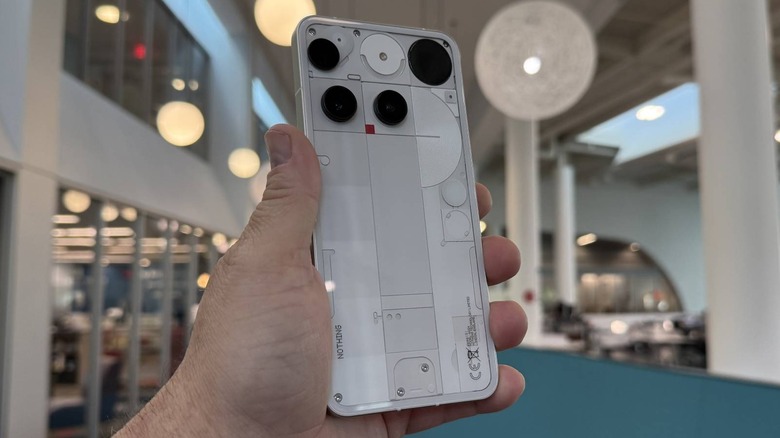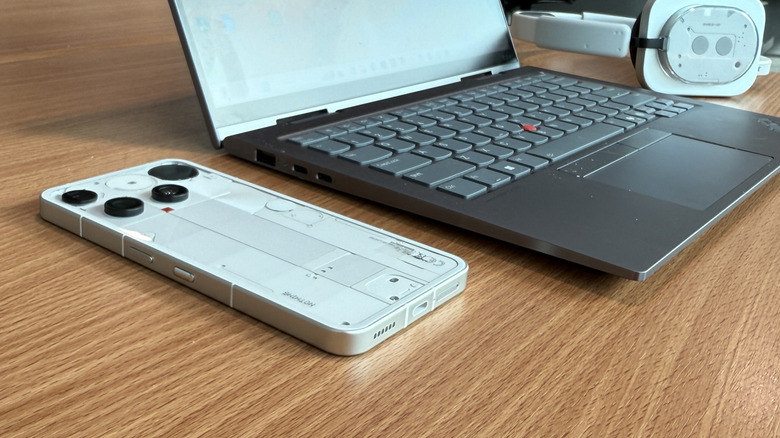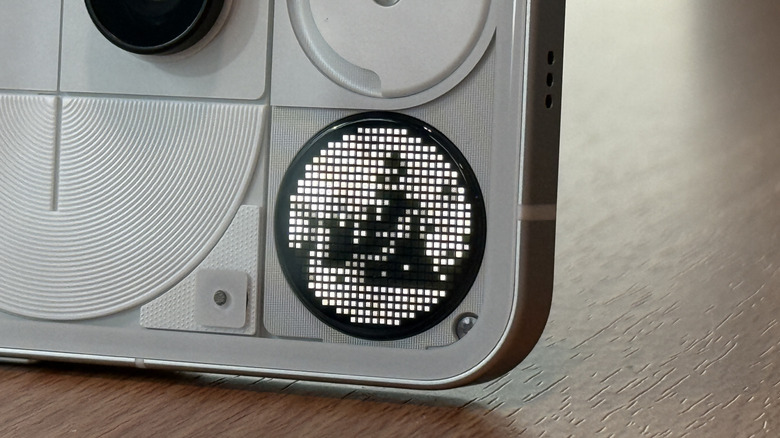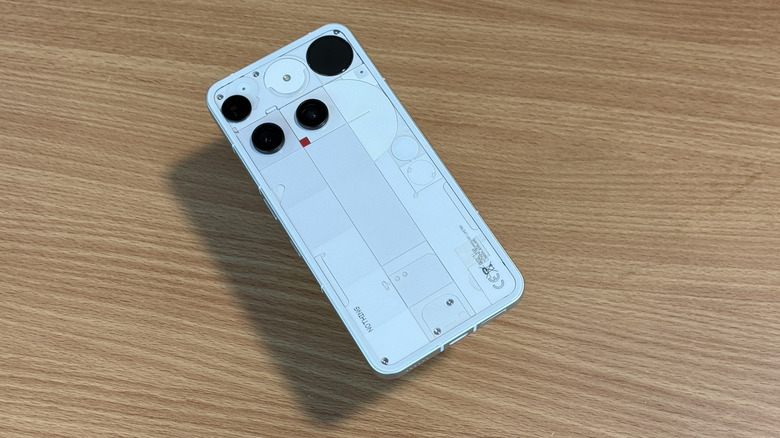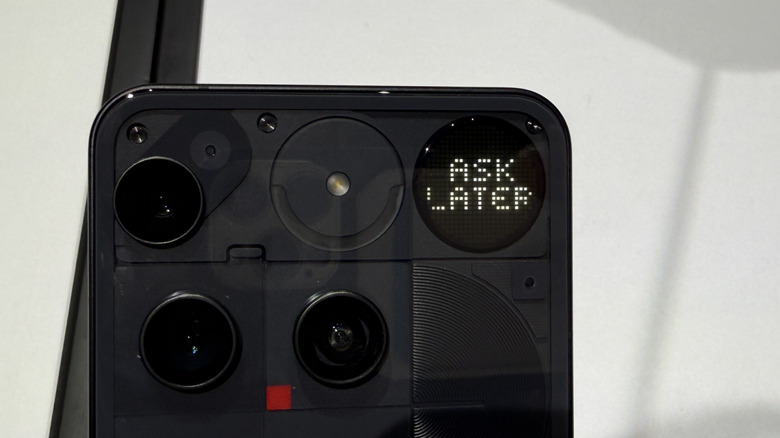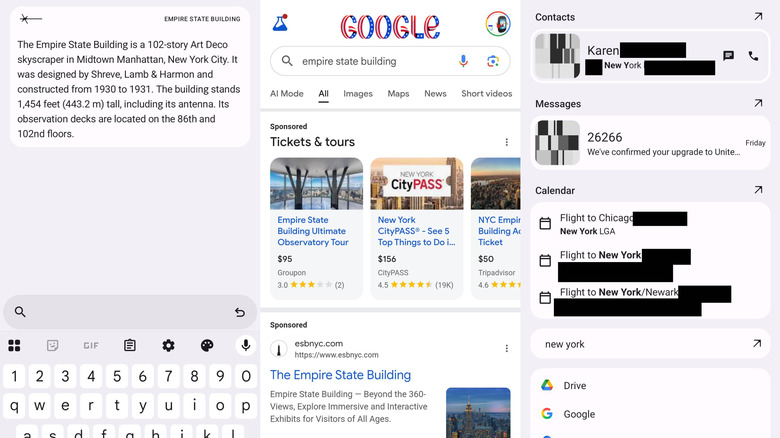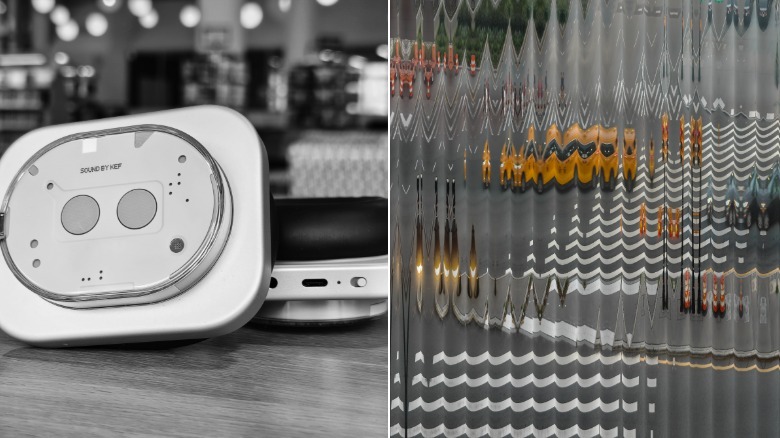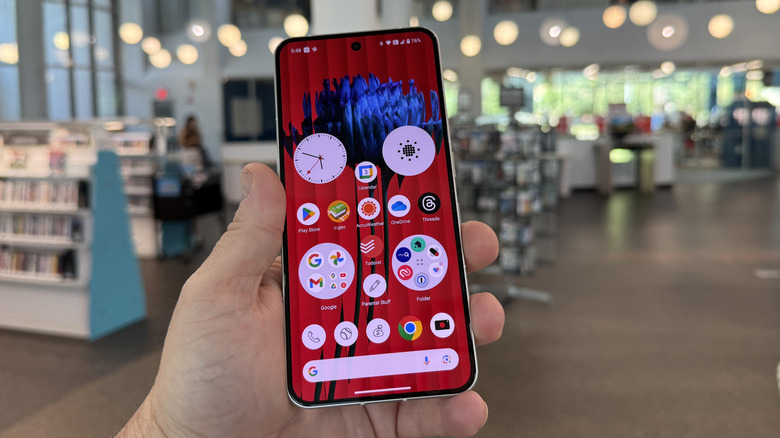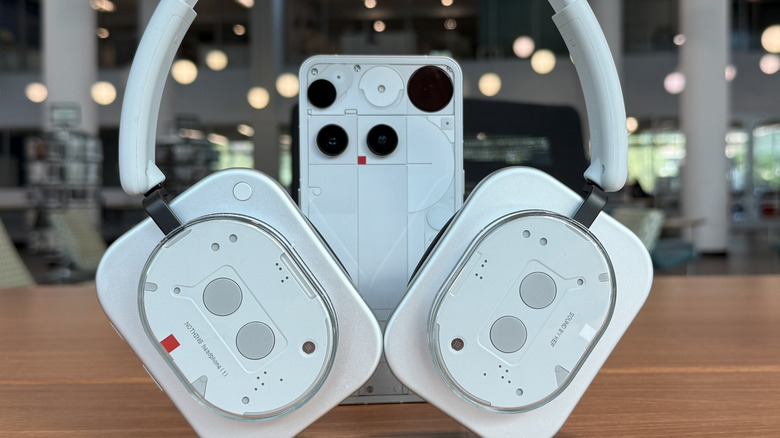Nothing Phone (3) Review: Certainly A Flagship With Some Truly Unique Features
The Nothing Phone (3) is what the company is calling its first "true flagship" and for the most part, it's accurate in that assessment. Everything about this phone screams flagship performance, from the huge battery to the great cameras but there's still some nagging doubt. The phone stops just short of the line when it comes to being a flagship. The processor comes up just a tad short. The screen, a tad short. The fingerprint sensor is a tad short.
But a smartphone is more than just a collection of specs — it can be more than the sum of its parts. This is why we read and watch reviews — so we can find out how the phone acts on the daily. The truth about this phone is, most of the corners cut really don't matter. There is one that isn't amazing, but even that isn't bad.
I received a Nothing Phone (3) review sample at my hands-on session in London at the beginning of the month and I've been using it for about a week on T-Mobile's network in Chicago and New York city, through a holiday weekend. This is my full review.
The Design
This is the start of every conversation surrounding the Nothing Phone (3). To be honest, it's a lot. The Nothing Headphone (1) that I reviewed had a similar vibe, but at least with that one, I saw where the company was going. In the case of this phone, there's a lot of take in. It's likely that much of the design was dictated by the components. At the top of this phone, you have three 50-megapixel sensors, a light, and a small glyph matrix screen. That's a lot of pack into a small area, so I get that design elements may have been hard to place.
What's good about the design is that the phone retains its thin profile with just the lenses of the cameras adding additional thickness. There's no obnoxious camera island that many — many — phone makers have gone with. I respect that, and I would argue I like it, although that could leave the camera extra vulnerable to impact.
What I don't like about the design is how "throw darts at a dartboard" it feels. I think you could have stuck these camera lenses anywhere on the back of the phone and they would look and feel just as awkward. I mentioned in my hands-on time that the black colorway really reduces this look to the overall improvement of the design. When the lenses are black and white, no other design elements — not the transparency, not the tic-tac-toe gridlines can draw your attention away from it.
It's bold, and sometimes bold is enough.
The Glyph Matrix
The other element on the back of the phone is extremely welcome — the Glyph Matrix. Previous Nothing phones have has glyphs on the back of them — LED light strips that could perform a number of various functions like indicate an incoming call/caller with a specific pattern or show you how long until your timer goes off, or see when your Uber will arrive. The glyphs were neat, but functionality was limited.
The Glyph Matrix (potentially) makes glyphs more useful, but in a "we can't wait to see what developers do with it" kind of way. Fortunately, Nothing is not waiting for that. It has built a few neat little toys to go with it, and in fact, Nothing calls them "toys."
There are a few of them, but my favorites are the Magic 8 Ball, the Leveler which acts like a level bubble, the glyph mirror (seen above) which allows you to see yourself and take a selfie, and a Rock, Paper, Scissors game. I don't know about you, but I've always wanted to play RPS against my phone.
The rest of the hardware
When you think of a flagship phone, you usually think of the hardware and that's fair enough. The hardware in this case is solid — 12 or 16 GB of RAM with 256 GB or 512 GB of storage. Some of the other hardware is going to be where some small cracks in the armor appear. The phone runs the Snapdragon 8S Gen 4, instead of the 8 Elite. The phone has an LPTS screen instead of LPTO. The Phone has an optical fingerprint sensor instead of an ultrasonic sensor.
But the question is, how does this translate into real-time performance? For most of those, the answer is, "you won't notice." In general, the only place you'll notice an issue (and it's not small) is in day-to-day performance of the device. The processor seems to get bogged down every now and then. I saw stutters in a number of apps, most notably the camera. It wasn't all the time, but it was noticeable, and that's not a great feeling for a phone you paid this much for.
The highs and lows glyphs
You select your toy by pressing a capacitive button on the back of the phone and then activate it by long pressing it. For something like the clock, you just have to press the button. For a game you need to cycle through the toys to get to the one you want, and then long press it. It's cool and intuitive, so that's what I like.
Nothing has a cool concept here, but I don't think it's going far enough. Many developers won't bother with the glyph matrix until it becomes a proven entity, and the collection of games and functions is still extremely limited. Nothing needs to triple the number of toys to make sure that each and every person who buys a Nothing phone has a glyph that they just can't live without, and it didn't do that here.
But overall, there's much more potential here than a standard glyph interface, and it's on brand, both of which are really nice to see. I just hope Nothing can make this a must-have feature as opposed to a party trick.
Essential Search
Nothing is the latest company to introduce a universal search concept which it is calling Essential Search. Basically this is an AI-powered search box that can replace the normal Google search box, and they both have different use cases. If you've used the Google search bar widget on any Android phone, you already know how it works — you Google stuff, basically.
Essential search doesn't go an extra step, so much as it goes in a slightly different direction, as illustrated above. Essential search uses AI to expand your search to content on your device and answer questions you may ask it. That's good in theory, but in practice there are two roads to take here. If you want to look up a place or navigate to it, or know its hours, or do basically anything that's not on your phone, Google search is the best route to go.
If you want to look up a contact, or a text message or a photo on your phone, Essential search is the droid you're looking for. The problem is, there's no way to switch between them easily, so you'll need to decide ahead of time, which function you intend to use more often. Or, Nothing needs to make it possible to flip between them quickly.
Four 50-megapixel shooters
The Nothing Phone (3) comes packed with four 50-megapixel cameras. The front is a 50-megapixel selfie camera. The main shooter is a 1/1.3" sensor, the telephoto sensor gets up to 3x lossless zoom, and the ultrawide camera gets a 114-degree field of view. Because of the sensor sizes, you end up with a similar setup as OnePlus phones; you get .6x, 1x, 2x (main with a 50% crop), 3x, and 6x (tele with a 50% crop). On paper, the cameras are a very solid setup, and when the lighting is good that holds up.
Shots can go a little wonky at times with the color science — sometimes you won't get quite the same colors in one lens or the other, but that's the exception, not the rule. Generally, all of these cameras can do a great job.
Nothing went with the telephoto lens for macro shots, which is usually my preference for that. Using the telephoto lens after all means you don't have to crouch down as far to get those macro shots, and the bokeh is quite good with that setup though the focus could be sharper.
Nothing also packs in a few filters into the mix as well. Some of those make sense, like B&W film which, surprisingly, takes black and white photos. Others, like Wide Angle take wide angle shots which is something you could already do. Switching to some of them prompts you to grant permission for location information...for some reason. This feature seems a tad undercooked, but I love the results of the B&W film and the Lenticular filter, seen above.
Keep it small at night
In low light situations, the camera is still pretty respectable, but that comes with the same caveat as most other phones — still subjects. The Nothing Phone (3) is no exception and that includes the selfie camera. Still, when you're capturing subjects that don't move, you can get some very respectable shots, but that's when the second caveat kicks in — on your phone's screen.
If you blow up any nighttime shots, you'll see a lot of grain in the darker areas. You'll also see streaks of light from light sources which is also common when the lights go down, even in flagship phones.
You'll get better results in your nighttime shots if you tap the screen to select your subject before you snap the photo. This is something I started seeing more and more often since the OnePlus Open in late 2023. Doing so allows your phone's camera sensor to know where the bright spots are, and adjust the exposure appropriately so highlights don't get blown out. Still, the photos you take will be limited to social media and your phone's screen. If things get larger, the quality starts to degrade quickly.
Performance and battery
As mentioned, the main corner cut for this phone is the selection of the Qualcomm Snapdragon 8S Gen 4 processor over the top tier Snapdragon 8 Elite. On Geekbench, the phone scores 2,134/7,081 on Geekbench, which are respectable scores. In terms of gaming, "Asphalt: Legends" performs smoothly, as does "Call of Duty: Mobile." Given all that, I can't say for sure that the processor is definitely the cause of the stutters I noted earlier — in fact I think it's more likely that there are some software optimizations that need to be put in place.
On the battery side, the phone performs well, but I'm going to caveat that by pointing out that nothing about my review period was "normal." I had the phone overseas, on planes, running around the Chicago suburbs running errands, and celebrating the 4th of July. At no time did the phone run out of battery before bedtime, which is pretty great, given all that activity. I can confidently say that this phone sips battery even when it's off of Wi-Fi.
Nothing Phone (3) Price, availability, and verdict
Overall, this is an ambitious phone from Nothing. I had hoped the design would eventually appeal to me; it honestly did not, but I can't say it any more often than I already have — visual appeal is subjective. Beyond the look of the hardware, there's some good stuff here. The cameras are quite good, the software is as always excellent. The Glyph Matrix is really cool, and has strong potential, but for the moment, it's a tad undercooked. This phone is a true flagship, but it's not the best phone you can buy at this price.
If you're a fan of the brand, this is an excellent phone. Plus, for the first time, you can buy this phone in the United States without having to jump through any hoops. That alone is worth celebration. As for the price, the phone starts at $799 (from the US Nothing Store online), which is the same as the iPhone 16 and the Samsung Galaxy S25 (excluding sales, etc). The Nothing Phone (3) is not better than either of those phones, but it's not much worse, and it has a distinctive personality, and that can go a long way. All the same, Nothing made some bold moves with this phone, and I respect that, even if I'm not a fan of the external aesthetic.
